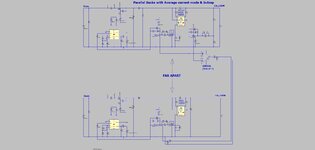cupoftea
Advanced Member level 5
Oops sorry, this was meant for the analog forum on this website
Hi,
Supposing you have an analog signal voltage you want to send a long way on a PCB....maybe even up headers and on to a different PCB. Due to SMPS's on the PCB(s), the ground potential at different plcaes may be different......you obviously always want the signal with respect to local ground to be the same value.
How do you ensure this?
Would you eg use a AD8226 InAmp and send it like the following?
AD8226
Oops sorry, this was meant for the analog forum.
Hi,
Supposing you have an analog signal voltage you want to send a long way on a PCB....maybe even up headers and on to a different PCB. Due to SMPS's on the PCB(s), the ground potential at different plcaes may be different......you obviously always want the signal with respect to local ground to be the same value.
How do you ensure this?
Would you eg use a AD8226 InAmp and send it like the following?
AD8226
Oops sorry, this was meant for the analog forum.
